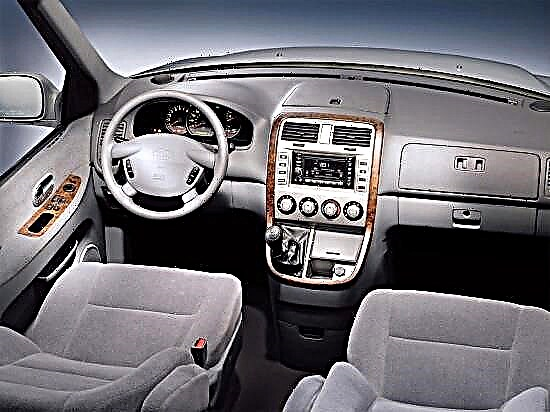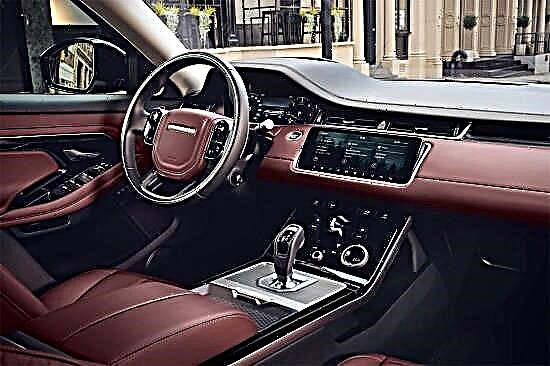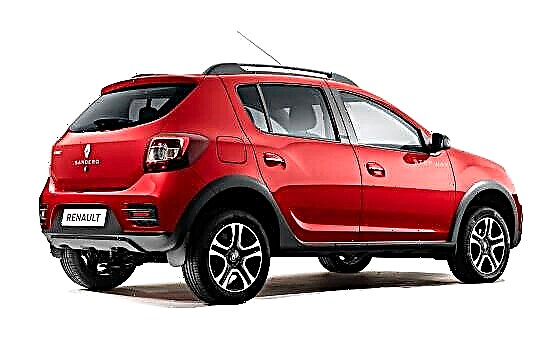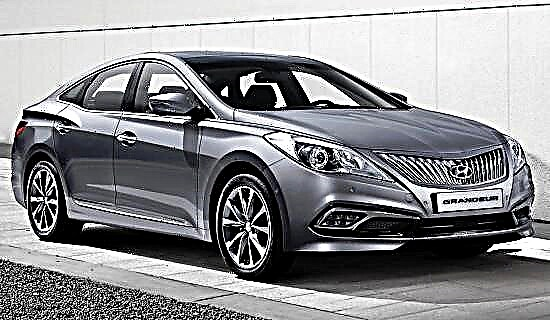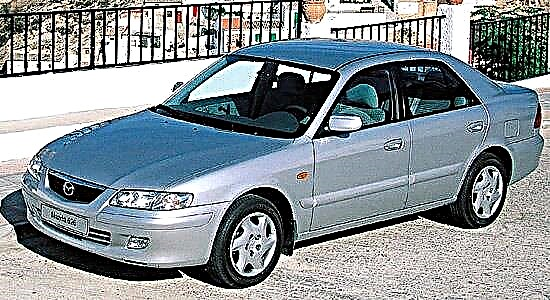Mazda 626 car is an export modification of Mazda Capella, intended for sale in foreign markets. Mazda produced Mazda 626 cars from 1978 to 2002.
The predecessor of the car is Mazda 618, the successor is Mazda 6. Mazda 626 has other names such as Mazda Cosmo (for the domestic Japanese market), Ford Telstar (for Australia), Mazda Anfini MX-6, Mazda Anfini MS-8, Mazda Xedos 6 (Japanese market Eunos 500), Mazda Anfini MS-6, Mazda Cronos.

During the period of operation, five modifications of the car were released:
- CB (produced in Japan from 1978 to 1982 in coupe and sedan bodies);
- GC (produced in Japan and Colombia from 1983 to 1987 in coupe, sedan and hatchback bodies);
- GD (produced in Japan, Colombia, Zimbabwe and the USA from 1988 to 1992 in sedan, station wagon, hatchback and coupe bodies);
- GE (produced in the USA, Japan and Colombia from 1993 to 1997 in sedan and hatchback bodies);
- GF (produced in Colombia, Zimbabwe, Japan and the USA from 1998 to 2002 in station wagon, sedan and hatchback bodies).
Officially, the last car left the assembly line on August 30, 2002 in the United States, but cars were assembled in Colombia until 2006).
According to the European classification, the Mazda 626 belonged to the D class, in North America, the CB and GC modifications belonged to the compact cars, the GD, GE and GF - to the medium cars.
Mazda 626 has five modifications (generations), which were produced at different times for almost twenty years. And all this time, the exterior of the car corresponded to the trends of its time, was advanced and memorable. Each modification had its own flavor, which made the car recognizable on the street, the body shape changed, starting from the angular forms of the 80s and ending with biodesign elements in cars of the 90s, the radiator grilles, rear and front optics changed. Moreover, often the facelift was carried out within the framework of one generation.
The interior of the Mazda 626 has always been distinguished by its thoughtfulness and ergonomics and was created according to the principle of “simple but tasteful”. The latest modifications of the car (GD, GE, GF) surpassed the first ones (CB, GC) in their dimensions, which significantly increased the comfort of car operation. The Mazda 626 is distinguished by high-quality finishing materials, a convenient instrument panel and a well-thought-out arrangement of the main controls. The trunk has always been distinguished by its large volume and low landing height.
Specifications:
- Mazda 626 with index SV was the first car in the line. The car was rear-wheel drive, with a front engine. The Mazda 626 CB was equipped with two petrol four-cylinder two-liter SOHC engines with 80 and 75 horsepower respectively. The car was practically no different from the Mazda Capella, which was produced for the domestic Japanese market. Currently, this generation is practically not found on the domestic market for used cars.
- Mazda 626 GC replaced the CB generation. The drive has changed from rear to front. The range of engines has expanded. Installed on the car:
- gasoline carburetor engines with a volume of 1.6 liters, with a capacity of 80 hp;
- 2-liter - 83 hp and 101 hp;
- two-liter injector with a capacity of 120 hp;
- two-liter turbo-diesel engine with 66 hp.
The Mazda 626 GC was equipped with a five-speed manual transmission, three-speed and four-speed automatic transmissions.
Front suspension - McPherson, rear - independent.
In 1986, the Mazda 626 GT (sports modification - Turbo) was released. - Mazda 626 with GD index appeared in 1988. Installed on the car:
- four-cylinder petrol engines;
- 2.2 liters - 115 and 145 hp;
- 2.0 liters - 90 and 148 hp;
- 1.8 liters - 90 hp;
- 1.6 liters - 80 horsepower;
- two-liter diesel engines with a power of 75 hp.
The gasoline engines featured good idle torque. The gearbox is either a five-speed manual or a four-speed automatic. Mazda 626 GD was equipped with both front and all-wheel drive 4WD and 4WS.
It was marketed in the North American market as the Mazda MX-6.
The car was notable for its reliability, currently a used Mazda 626 GC can still be purchased at the price of "Zhiguli", the model is in high demand among motorists, although it is less and less common. - four-cylinder petrol engines;
- In 1993, a new Mazda 626 based on the GE platform. The car was equipped with a five-speed manual transmission and a four-speed automatic.
The Mazda 626 GE was a front-wheel drive model, with a longitudinal engine ... although there are still cars with four-wheel drive, rear and center differentials.
Front suspension - McPherson, rear - multi-link.
Front and rear brakes - disc.
The technical characteristics of the car are as follows:- wheelbase - 2610 mm;
- length - 4680 mm;
- width - 1750 mm;
- height - 1370 mm - in models produced from 1993 to 1995; 1400 mm - in models produced from 1996 to 1997;
- full curb weight - 1840 kg;
- average fuel consumption - 8.2 liters per 100 km (depending on the type and volume of the engine).
The Mazda 626 GE was equipped with 1.8-liter four-cylinder petrol engines with a capacity of 90 hp. and 104 hp. (FP index), 2 liters - 118 hp. (FS index), as well as six-cylinder 2.5-liter engines - 164 hp (KL index).
Cars of this series were equipped with a unique turbocharged diesel power unit RF-CX with a volume of 2.0 liters and a capacity of 75 hp. The uniqueness of the motor lies in the presence of a Comprex wave pressure exchanger, with the help of which the pressurization was carried out. The scheme of work is that the exhaust gases enter the rotor and compact the charge of the air entering the cylinders. As a result, the engine is distinguished by its economy, because energy is used only to drive the rotor from the crankshaft. Neither before nor after - such engines were practically never used on any production car. The whole problem is in the complexity of the design and high repair costs. Therefore, since 1997, the Mazda 626 GE began to be equipped with diesel engines with conventional turbochargers, but cars with a pressure wave exchanger remained on the used car market. We also note that hydraulic compensators were the main disease of the engines of this modification.
Currently, the GE is the most common model among the Mazda 626 in the domestic used car market. - Mazda 626 GF - became the last, fifth generation, in the Mazda 626 lineup. Technical characteristics of the car are as follows:
- wheelbase - 2670 mm;
- length - 4575 mm (sedan), 4660 mm (station wagon), cars with a length of 4740 mm (1998-1999 years of production) to 4760 mm (cars of 2000-2002 years of production) were produced in the USA;
- width - 1760 mm;
- height - 1400 mm;
- full curb weight - 1285 kg;
- tank volume - 64 l;
- average fuel consumption - 8 liters per 100 km (depending on the type and size of the engine).
A five-speed manual transmission or a four-speed automatic transmission was installed on the car.
The power units of the Mazda 626 GF were: four-cylinder gasoline engines with a volume of 1.8 liters with a capacity of 90 hp, 2.0 liters - with a capacity of 125 hp. and 130 hp, six-cylinder 2.5-liter engines with 170 hp. and a turbodiesel with a volume of 2 liters and a capacity of 100 hp. with conventional turbocharging.
Mazda 626 GF is a front-wheel drive car with a front transverse engine arrangement, there are also cars with all-wheel drive.
The braking system is disc on all wheels.
Front suspension - McPherson, rear - multi-link.
The Mazda 626 car, regardless of generation, is quite balanced. The use of four-cylinder engines with different numbers of valves allows for a wide variability in the dynamic characteristics of various modifications. Among the general features, we note:
- good traction characteristics of power plants at low revs;
- excellent dynamic characteristics of motors;
- high information content of the pedals;
- quiet idling.
The directional stability of the Mazda 626 is at a level, but it is not suitable for sports driving because of the large body rolls when cornering at high speed.
Mazda 626 cars have a phlegmatic character, solid and confident, which is typical for family cars.

The safety of various modifications of the Mazda 626 has always been at the level and fully complied with the standards of its time.
In terms of performance, the Mazda 626 is a reliable but maintenance-free vehicle. In particular, it is necessary to pay special attention to the temperature of the coolant in order to avoid overheating of the motor. This statement applies to both four-cylinder and six-cylinder engines. The resource of a manual transmission is comparable to the high resource of the power plant; in automatic machines, it may be necessary to replace the clutches.
The body of all modifications of the Mazda 626 is highly corrosion resistant, with the exception of the rear part of the muffler, which requires periodic replacement.
The chassis of the car, despite its complex design and innovative schemes, is distinguished by its strength and reliability.
Disc brakes installed on the latest modifications can fail after one hundred thousand mileage, due to moisture and dirt, the pistons can "sour". As a rule, there are no problems with drum brakes of early modifications.
The operating costs are low thanks to the economical engines. Earlier modifications can be filled with AI-92 gasoline, for modifications of the nineties it is better to use A-95 gasoline.
Electrical equipment of the Mazda 626 rarely fails and does not cause any particular complaints.
The main problems are hydraulic lifters and wave exchangers, which were installed on cars in the GE modification until 1997.
Note also that the Mazda 626 is highly maintainable.
A little about tuning Tuning. Any modification of the Mazda 626 is an excellent object for tuning both external and internal, as well as technical. For the latest modifications, extended bumpers, skirts on the sills are widely used, sometimes they install or raise their own rear wings, change the front and rear optics, aerodynamic body kits, window and hood deflectors, radiator grilles. The interior is covered with artificial leather, a sports steering wheel is installed. The standard parts in the design are changed to a sports version.
The tuning options for the Mazda 626 completely depend on the individual preferences of the owner and, one might say, are limited only by his imagination.





